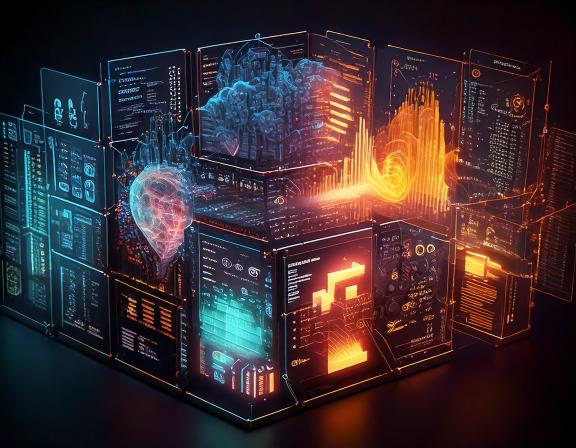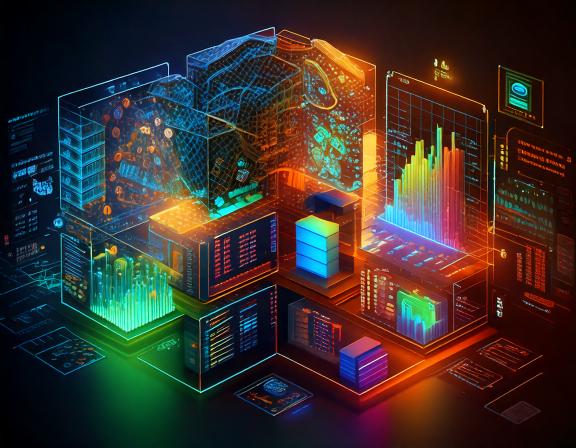What is Supervised Learning?
Supervised learning is a branch of machine learning where an algorithm learns from labeled data. In this approach, the data consists of input-output pairs, where the input is the data we want to analyze, and the output is the expected result. The model uses this labeled data to learn patterns and make predictions or classifications.
At its core, supervised learning relies on two main types of tasks: classification and regression. Classification involves predicting discrete labels, such as determining whether an email is spam or not. Regression, on the other hand, focuses on predicting continuous values, like forecasting house prices based on features such as size, location, and age.
How Supervised Learning Emerged
The roots of supervised learning can be traced back to the early development of statistics and pattern recognition. The field gained momentum in the mid-20th century with the advent of computers capable of handling large datasets. Algorithms like linear regression and k-nearest neighbors (k-NN) laid the groundwork. Over time, advancements in computational power and data availability fueled the evolution of more complex models like decision trees, support vector machines (SVMs), and neural networks.
The emergence of supervised learning was further driven by the need to solve real-world problems that required accurate predictions. For instance, researchers began using these techniques for weather forecasting, financial modeling, and even early forms of computer vision. The availability of large labeled datasets, such as the MNIST dataset for handwritten digit recognition, provided a foundation for experimentation and innovation in the field.

Real-Life Examples of Supervised Learning
Supervised learning is deeply integrated into our daily lives. Here are a few examples:
- Email Filtering: Email providers use supervised learning to classify messages as spam or important based on labeled examples.
- Fraud Detection: Banks analyze historical transaction data to predict and flag fraudulent activity.
- Medical Diagnosis: AI models assist doctors by identifying diseases from diagnostic images like X-rays and MRIs.
- Customer Support: Chatbots powered by supervised learning algorithms provide automated responses to customer queries, improving efficiency and reducing response times.
- Self-Driving Cars: These vehicles rely on supervised learning to recognize traffic signs, detect pedestrians, and make informed decisions based on labeled driving data.
How Businesses Benefit from Supervised Learning
Today, businesses across industries leverage supervised learning to enhance efficiency and profitability. For example, retail companies use it to predict customer preferences and offer personalized recommendations, while manufacturers employ predictive maintenance to prevent equipment failures.
In the financial sector, supervised learning models help in credit scoring, enabling banks to assess the creditworthiness of potential borrowers. This reduces risks and ensures better decision-making. In e-commerce, platforms like Amazon and Netflix use supervised learning to recommend products or movies based on user behavior and preferences.
Furthermore, marketing teams employ supervised learning to analyze customer feedback and sentiment. By categorizing reviews and identifying patterns, businesses can improve their products and services, thereby increasing customer satisfaction and loyalty.

The Future of Supervised Learning
As technology evolves, supervised learning is expected to play a crucial role in developing intelligent systems. Emerging areas include autonomous vehicles, where models predict traffic patterns and recognize objects, and personalized medicine, where algorithms analyze genetic data to create tailored treatments. The integration of supervised learning with other AI techniques promises to unlock innovative applications.
One of the most promising areas is in climate science. Supervised learning models can analyze satellite data to predict weather patterns, track deforestation, and monitor carbon emissions. This could significantly aid in addressing climate change and promoting sustainability.
Another future direction is the integration of supervised learning with Internet of Things (IoT) devices. Smart homes and cities will increasingly rely on AI models to optimize energy usage, improve transportation systems, and enhance overall quality of life. These applications highlight how supervised learning will continue to shape the future of technology and society.
Conclusion
Supervised learning has revolutionized how we process and interpret data, enabling breakthroughs in numerous fields. Its practical applications, from improving customer experiences to saving lives in healthcare, highlight its transformative potential. As we continue to refine these models and develop new techniques, the possibilities for supervised learning are limitless.
Whether it is enhancing business operations, solving global challenges, or enabling cutting-edge innovations, supervised learning remains a cornerstone of the AI revolution. With continued research and collaboration, the impact of this technology will only grow in the years to come.
